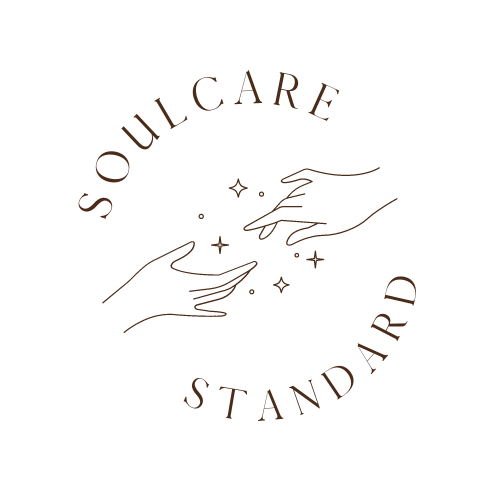SKIN 101: INFLAMMATION
Inflammation is natural. It’s our body’s built-in defense system to protect itself. When our body perceives an injury, our immune system rallies reinforcements, resulting in inflammation. While it’s an essential response for healing, long-term inflammation can have harsher effects, breaking down our skin health and compromising our skin barrier. Many diseases known to humankind have one thing in common: inflammation [1]. And that includes acne.
Inflammation can be triggered externally (think: pollution, sun exposure, air quality) and internally (think: diet, stress, health conditions such as rosacea and eczema). Some of the most common manifestations of inflammation range from redness, heat and increased sensitivity to itching, early signs of aging, hyperpigmentation and stubborn breakouts. Another common culprit of inflammation is product overuse, particularly from over-exfoliating, over-sampling various products at once and irritants and allergens in formulas.
There’s no perfect serum or one-size-fits-all solution for calming inflammation. Still, there are holistic ways to approach it – both internally by examining your lifestyle habits and externally with a consistent skincare routine using the right ingredients.
Take a deep inhale in 3, 2, 1…
Elevated cortisol levels during stressful times are actually a positive response in short stints, as it puts us in fight-or-flight mode whenever our sympathetic nervous system perceives a threat. However, experiencing too much stress can cause the cortisol to backfire and cause chronic inflammation [2]. That’s when managing your stress levels becomes crucial. Incorporating daily anti-inflammatory self-care offers moments of grounding in our hectic schedules. That can look like a 15-minute walk, calming masks, facial massages, deep stretching, a reflective journal session or winding down with a cup of tea. Targeting inflammation requires a holistic approach; it’s about assessing your overall well-being. Are you staying active, practicing good sleep hygiene and being mindful of the saturated fats, sugars and refined carbs in your diet? This part is simply a matter of seeing what works best for you, your body and your skin.
It’s all in the ingredients
When it comes to your skincare routine, focus on antioxidant-rich ingredients with anti-inflammatory properties. What exactly are antioxidants, you ask? Antioxidants can help with ending the domino effect of free radical damage and other components of the inflammatory response. They are one of the key skincare ingredients to reduce redness, improve skin sensitivity and prevent the breakdown of skin, as they can help reduce excessive immune response and bring about healing much faster [3].
Anti-inflammatory ingredients to incorporate into your skincare routine:
Aloe Vera: Aloe vera is a skin-soothing agent with a very long track record. Not only is it moisturizing and protective, but it’s also rich in essential amino acids, fatty acids and vitamins C, E and B-12, which help strengthen the skin barrier and lock in moisture [4].
Ceramides: Ceramides reinforce the skin’s structure and strengthen its barrier, and a healthy skin barrier prevents skin from chronic irritation and inflammation. (A damaged skin barrier is one of the root causes of many skin conditions, but more on that another day.)
Colloidal Oatmeal: Ground oatmeal helps strengthen the skin barrier and soothe irritation. It’s a simple anti-inflammatory ingredient with anti-fungal with antioxidant properties.
Green Tea: Green tea contains polyphenols (aka catechins) that have multiple antioxidant effects, including anti-inflammation, calming redness and protection against free radical damage [5].
Niacinamide: This vitamin B3 compound is an anti-inflammatory ingredient that reduces redness and is often found in moisturizers for dry skin. Niacinamide is also an antioxidant that can increase the production of ceramides, which helps maintain the skin’s protective barrier and reduce inflammation.
Sea Buckthorn Oil: An unsung hero in the skincare industry. Sea buckthorn plant berries contain high levels of vitamins C and E, so the oil is rich in antioxidants. (Fun fact: Sea buckthorn plant berries carry 10 times more vitamin C than an orange and are the third-highest source of vitamin E among plants.) This anti-inflammatory ingredient promotes moisture while regulating oil, and it helps to even out skin tone and fade post-inflammatory hyperpigmentation [6].
Witch Hazel: Witch hazel is an antioxidant-rich derivative of the Hamamelis virginiana plant. Its leaves and bark have astringent, anti-inflammatory and antibacterial properties, which are distilled into a liquid. Since witch hazel is naturally anti-inflammatory, it can help soothe itchiness, redness and irritation [7]. (Tip: Opt for alcohol-free formulas, as witch hazel with high alcohol content can be counterproductive.)
Vitamin C: The antioxidant properties of vitamin C help treat photodamage, calm skin inflammation reduce redness, even out skin tone and boost collagen production [8]. Vitamin C works well with complementing other antioxidants like vitamin E and ferulic acid, boosting the efficacy and stability of the molecule [9].
Vitamin E: Topical vitamin E can accelerate skin healing, combat free radical damage as an antioxidant and draw moisture into the skin as a humectant [10].
Article Sources
Hunter, Philip. The Inflammation Theory of Disease, EMBO Reports. 2012.
Harvard Medical School. Understanding the Stress Response. 2020.
Michalak M. Plant-Derived Antioxidants: Significance in Skin Health and the Ageing Process, International Journal of Molecular Sciences. 2022.
Hekmatpou D, Mehrabi F, Rahzani K, Aminiyan A. The Effect of Aloe Vera Clinical Trials on Prevention and Healing of Skin Wound: A Systematic Review, Iranian Journal of Medical Sciences. 2019.
OyetakinWhite P, Tribout H, Baron E. Protective Mechanisms of Green Tea Polyphenols in Skin, Oxidative Medicine and Cellular Longevity. 2012.
Zielińska A, Nowak I. Abundance of Active Ingredients in Sea-Buckthorn Oil, Lipids in Health and Disease. 2017.
Colantonio S, Rivers J. Botanicals With Dermatologic Properties Derived from First National Healing: Part 2 – Plants and Algae, Journal of Cutaneous Medicine and Surgery. 2016.
Oregan State University Linus Pauling Institute. Vitamin C and Skin Health. 2011.
Lintner K, Gerstein F, Solish N. A Serum Containing Vitamins C & E and a Matrix-Repair Tripeptide Reduces Facial Signs of Aging as Evidenced by Primos® Analysis and Frequently Repeated Auto-Perception, Journal of Cosmetic Dermatology. 2020.
Abid Keen M, Hassan I. Vitamin E in Dermatology, Indian Dermatology Online Journal. 2016.
